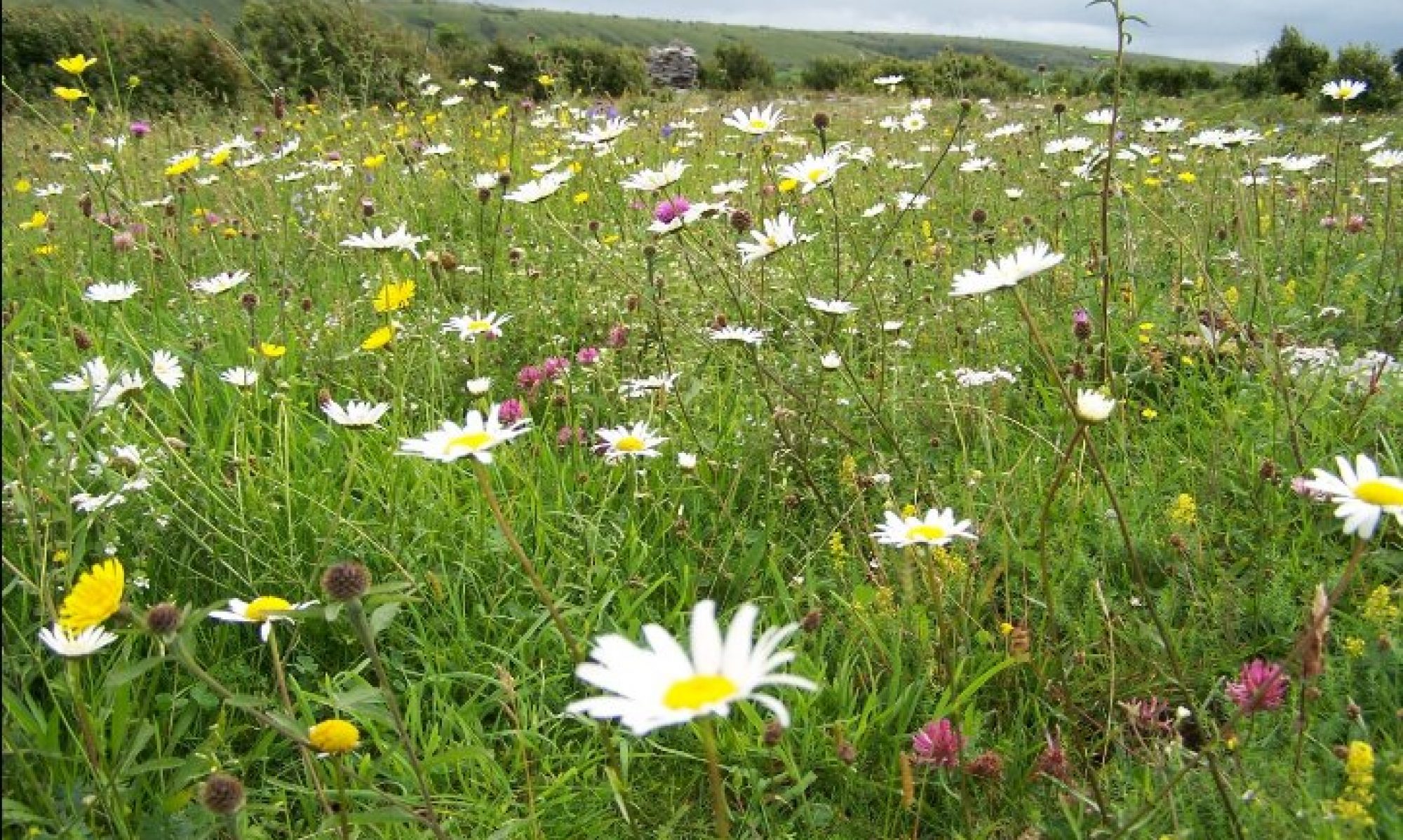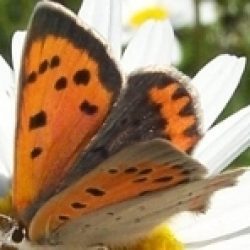The long days of bright sunshine during March and April accelerated the development of the Marsh Fritillary caterpillars. This warmth continues into May as I write (13 May) stimulating the early emergence of the adult Marsh Fritillary butterfly.
Our management work at Lullybeg Reserve during the winter has helped shorten development times by expanding areas receiving direct sunlight and making more food and habitat available to the caterpillars and the adults. The pattern of bright sunny days and cool, even cold nights might have helped in another way.
The Marsh Fritillary caterpillar is infected by two wasps, Cotesia bignelli and Cotesia melitaearum. The latter species produces three generations, predating a single generation of caterpillars. The first generation attacks the first instar larvae in July and August, killing a percentage of these before pupating, emerging and attacking third or fourth instar caterpillars, spending winter within fourth instar larvae. These infected larvae are killed in spring and the adult wasps infect the final growth stages of the caterpillars. Losses can be so large that a population is wiped out. This removes both the butterfly and wasp from the breeding habitat.
However, in cool, sunny springs, the emergence of adult wasps from their pupae is delayed. The developing wasps cannot heat themselves within their pupae and may remain longer than usual in this state. Meanwhile, the spring larvae develop faster in cool, sunny weather and will pupate before many of the wasps have hatched. In this way, more Marsh Fritillaries survive to take flight. The wasp cannot infect eggs, pupae or adults, and they emerge out of synchronicity with their prey. This might have occurred this year.
However, some final-stage larvae were infected; this year I have observed several larvae feeding intermittently, without enthusiasm. These will not pupate. Their lives are being prolonged by their internal parasitoids which, if they pupated now, would emerge without any available larvae to attack.
Their tactic therefore is to bite their way out of the caterpillar, usually at the end of May and spin dense white silk over their pupae to deliberately prolong their pupal phase until the next generation of Marsh Fritillary caterpillars are available for them to attack in mid to late July. The cycle then begins again.
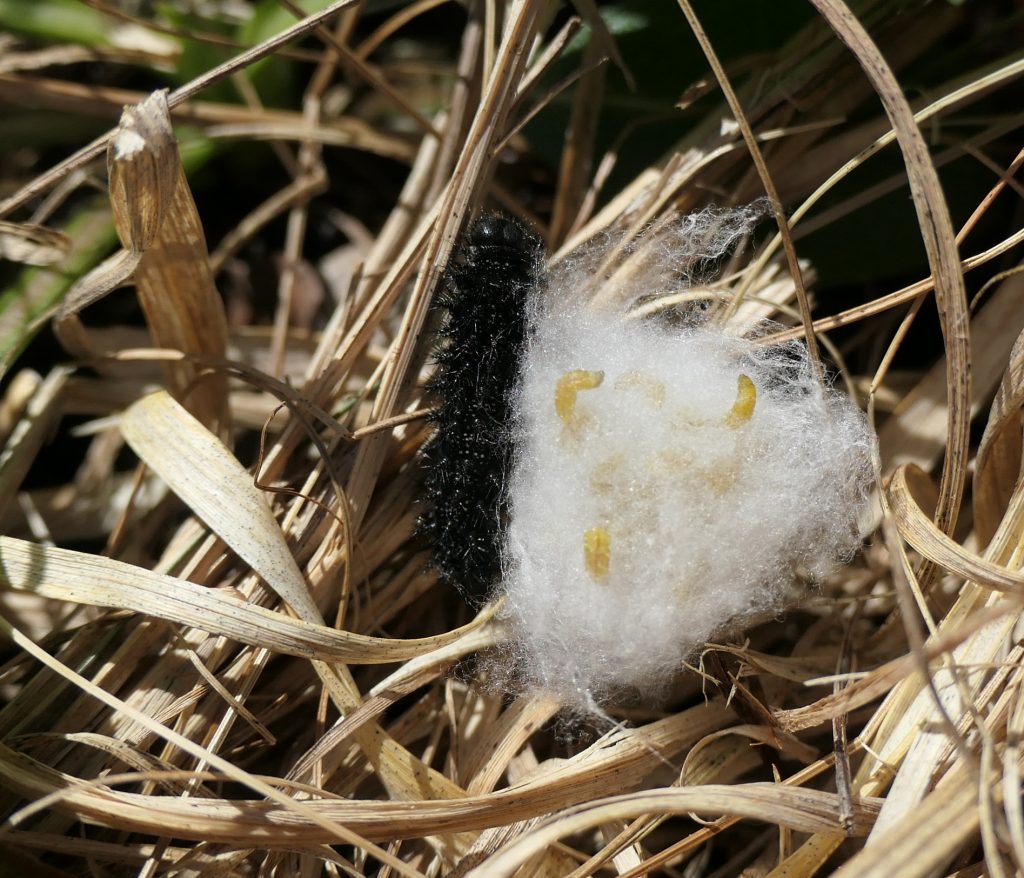
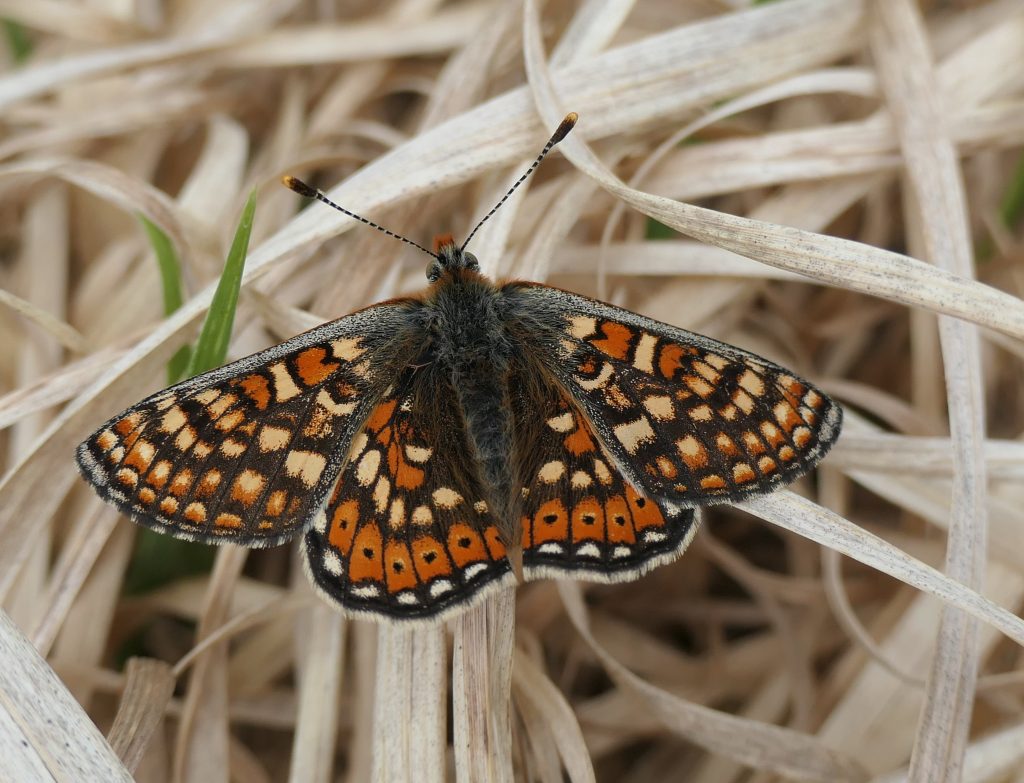
Maintaining a large area of habitat makes extinction at the site level less likely. Maintaining connections with nearby populations means re-population can occur if a site loses its population due to conditions that favour the wasp.
These objectives are being achieved in the Lullymore and Lullybeg areas. The recording of fifty Marsh Fritillaries in Lullybeg on Monday 12 May is a fitting reward for the hard work controlling scrub and disturbing selected areas of the sward containing the foodplant to avoid Moor-grass overdominating.
The butterflies seen on 12 May, all males, were patrolling low over the area, seeking newly hatched females in need of a mate. They were occasionally inspected by Dingy Skippers, also enjoying an early, populous spring. Happy times!
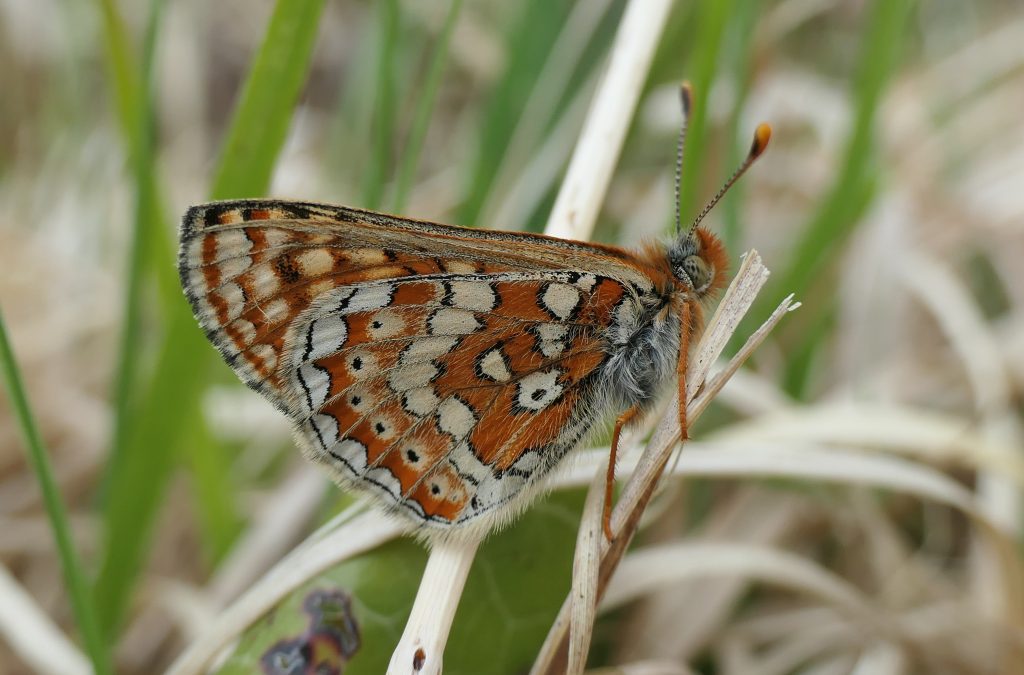
Photos copyright J. Harding
